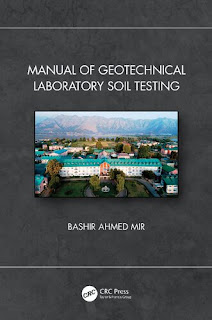Soil Mechanics 4th Edition
Graham Barnes ... 584 pages - Language: English - Publisher: Bloomsbury Academic; 4th edition (June, 2016).
Now in its fourth edition, this popular textbook provides students with a clear understanding of the nature of soil and its behaviour, offering an insight into the application of principles to engineering solutions. It clearly relates theory to practice using a wide-range of case studies, and dozens of worked examples to show students how to tackle specific problems. A comprehensive companion website offers worked solutions to the exercises in the book, video interviews with practising engineers and a lecturer testbank.With its comprehensive coverage and accessible writing style, this book is ideal for students of all levels on courses in geotechnical engineering, civil engineering, highway engineering, environmental engineering and environmental management, and is also a handy guide for practitioners.
New to this Edition: - Brand-new case studies from around the world, demonstrating real-life situations and solutions - Over 100 worked examples, giving an insight into how engineers tackle specific problems - A companion website providing an integrated series of video interviews with practising engineers - An extensive online testbank of questions for lecturers to use alongside the book.
Now in its fourth edition, this popular textbook provides students with a clear understanding of the nature of soil and its behaviour, offering an insight into the application of principles to engineering solutions. It clearly relates theory to practice using a wide-range of case studies, and dozens of worked examples to show students how to tackle specific problems. A comprehensive companion website offers worked solutions to the exercises in the book, video interviews with practising engineers and a lecturer testbank.With its comprehensive coverage and accessible writing style, this book is ideal for students of all levels on courses in geotechnical engineering, civil engineering, highway engineering, environmental engineering and environmental management, and is also a handy guide for practitioners.
New to this Edition: - Brand-new case studies from around the world, demonstrating real-life situations and solutions - Over 100 worked examples, giving an insight into how engineers tackle specific problems - A companion website providing an integrated series of video interviews with practising engineers - An extensive online testbank of questions for lecturers to use alongside the book.































